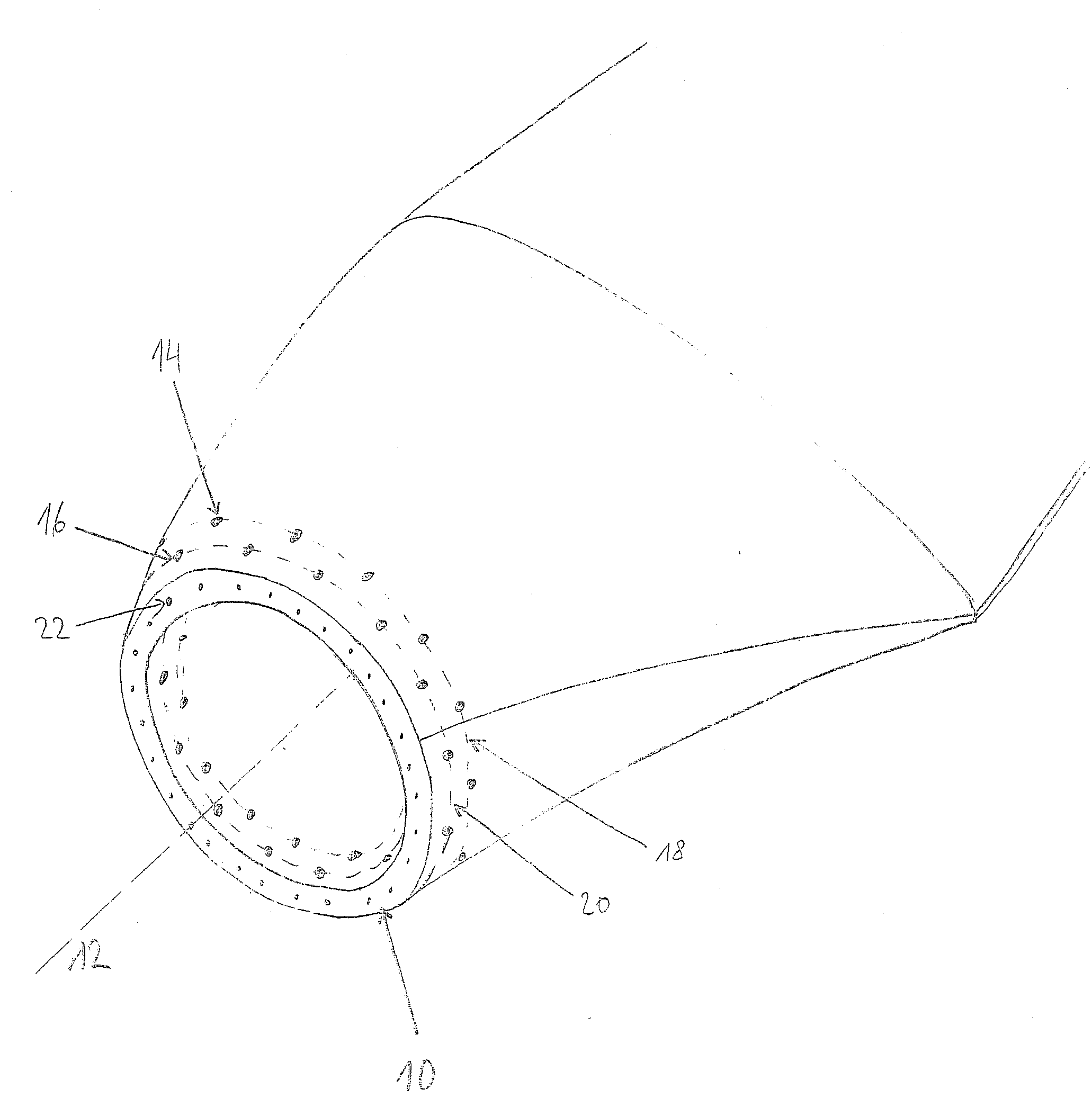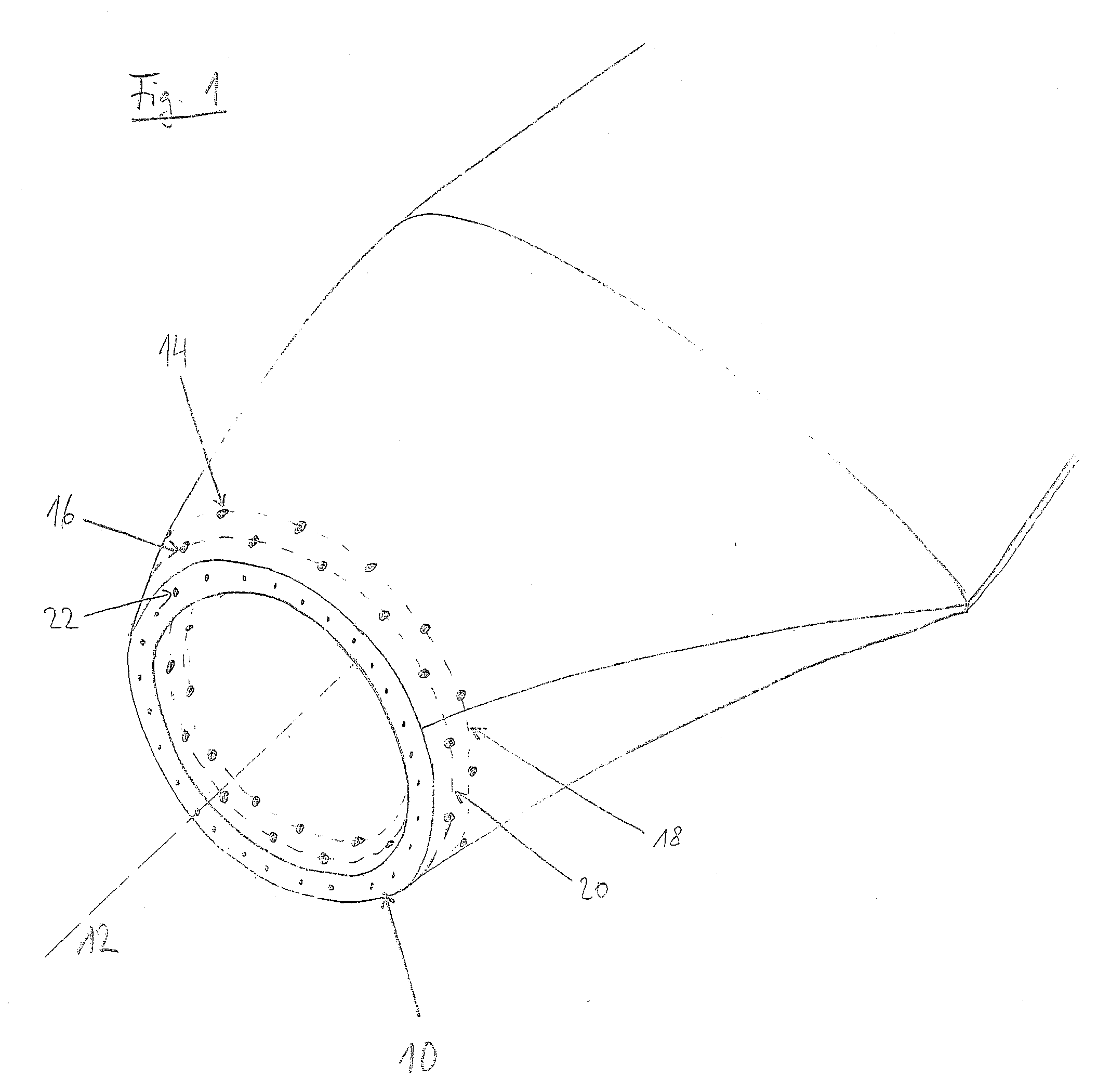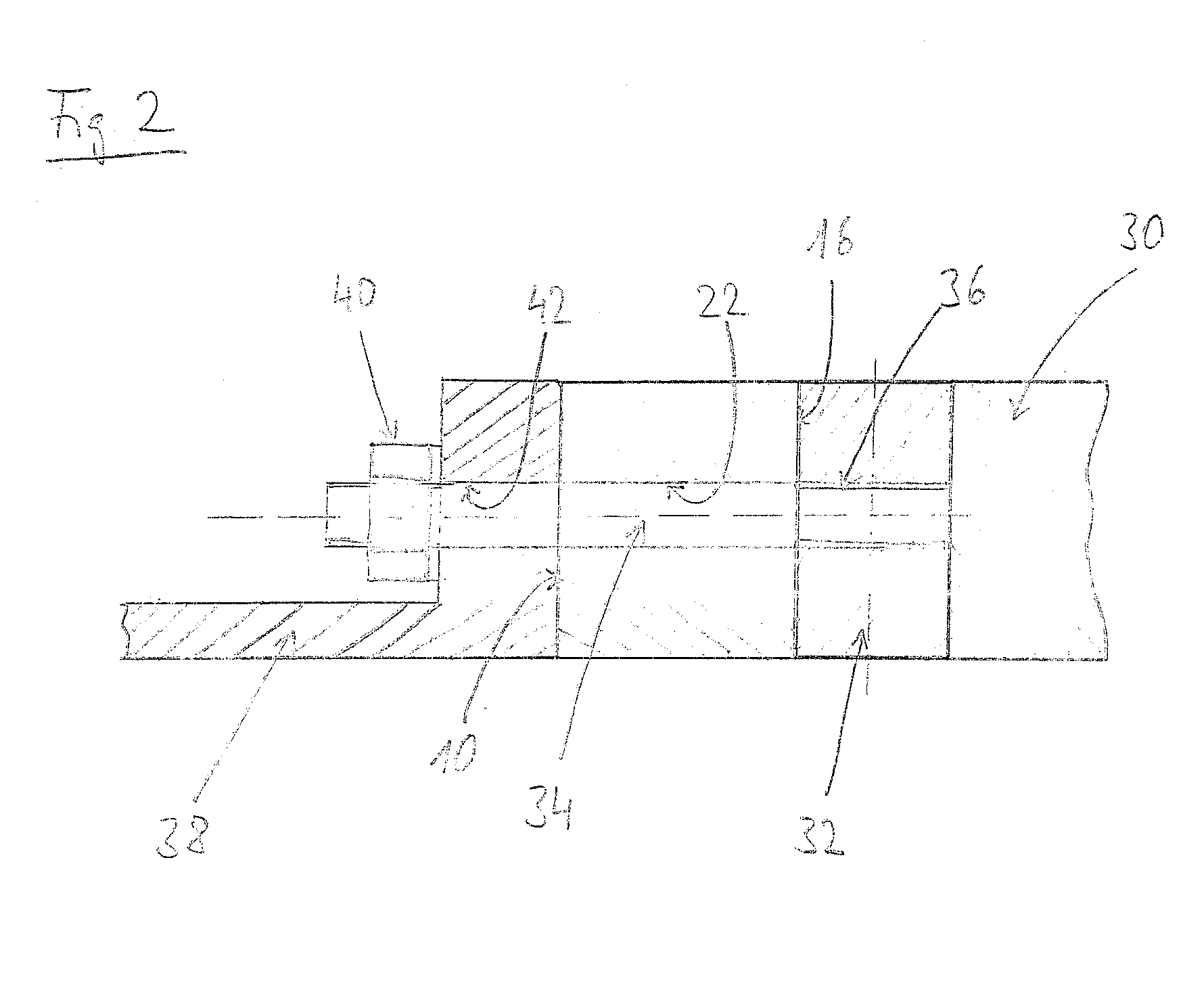Rotor blade for wind energy plants
- Summary
- Abstract
- Description
- Claims
- Application Information
AI Technical Summary
Benefits of technology
Problems solved by technology
Method used
Image
Examples
Embodiment Construction
[0026]While this invention may be embodied in many different forms, there are described in detail herein a specific preferred embodiment of the invention. This description is an exemplification of the principles of the invention and is not intended to limit the invention to the particular embodiment illustrated
[0027]The rotor blade, the blade base of which is outlined in FIG. 1, is made up of two half-shells from fibre reinforced plastic material in a per se known manner. On the hub-side end of the rotor blade, there is the hub-side rotor blade edge 10, which is formed by an approximately circular annular plane. The width of the ring corresponds to the material thickness of the rotor blade shells in this region. The longitudinal axis of the rotor blade is indicated at 12. The hub-side rotor blade edge 10 is aligned essentially vertical to the longitudinal axis 12.
[0028]The rotor blade is provided with a multiplicity of cross bores 14, 16. The cross bores 14, 16 are aligned transvers...
PUM
 Login to View More
Login to View More Abstract
Description
Claims
Application Information
 Login to View More
Login to View More - R&D
- Intellectual Property
- Life Sciences
- Materials
- Tech Scout
- Unparalleled Data Quality
- Higher Quality Content
- 60% Fewer Hallucinations
Browse by: Latest US Patents, China's latest patents, Technical Efficacy Thesaurus, Application Domain, Technology Topic, Popular Technical Reports.
© 2025 PatSnap. All rights reserved.Legal|Privacy policy|Modern Slavery Act Transparency Statement|Sitemap|About US| Contact US: help@patsnap.com



